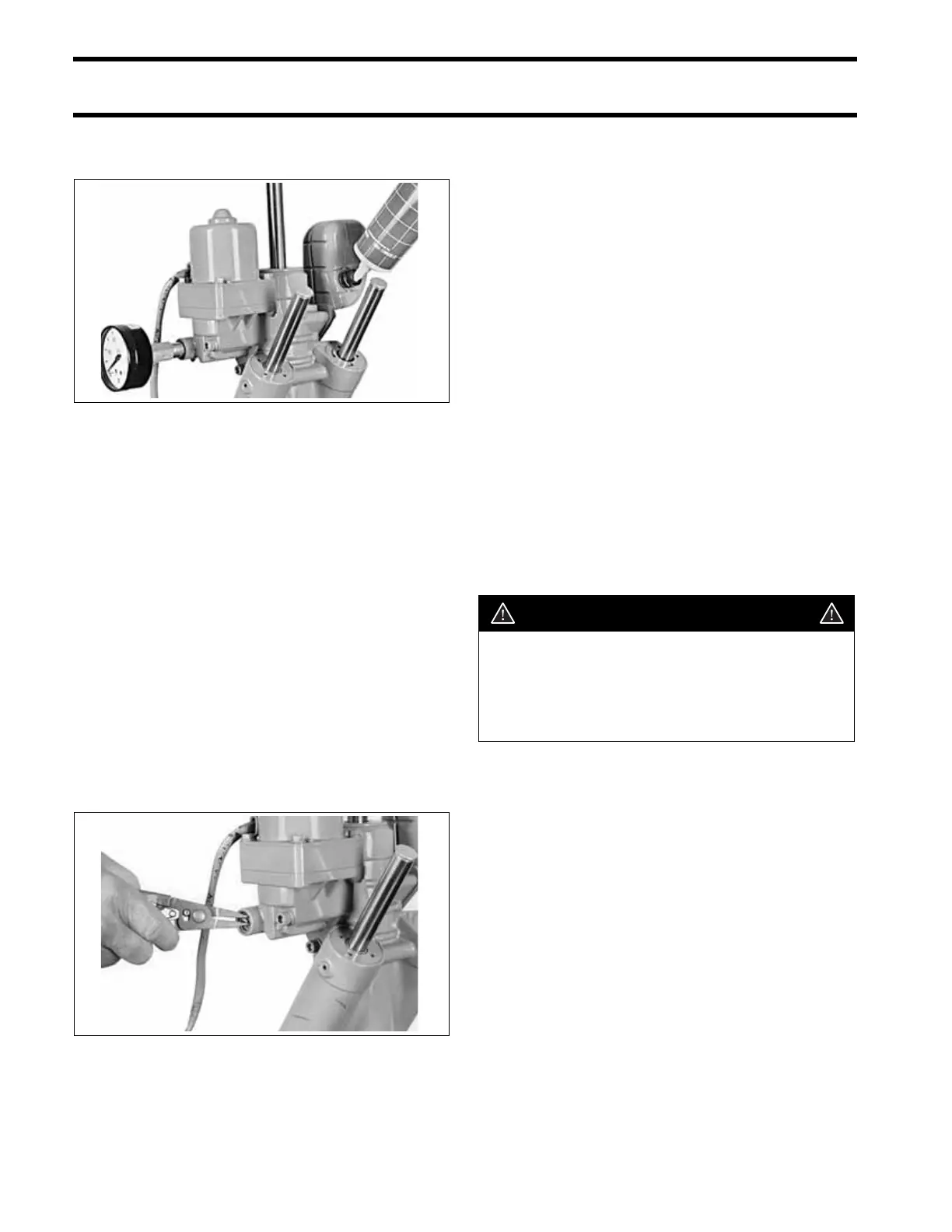370
TRIM AND TILT
TROUBLESHOOTING
all rods must be completely extended to check
fluid level.
Starting with the tilt cylinder fully retracted, run the
unit UP.
• The gauge should show 0 to 200 psi (0 to 1379
kPa) as the tilt cylinder is extending.
• The gauge should show 1400 to 1600 psi (9653
to 11032 kPa) as the unit stalls.
• Release the switch and watch for a pressure
drop. The stall pressure reading must not drop
more than 200 psi (1379 kPa) after motor stops.
If results vary from the above limits, there is a
problem in the UP circuit. Refer to MODES OF
OPERATION (Three Piston System) on p. 361
for circuit description.
STEP 2
Remove the manual release valve retaining ring
using retaining ring pliers.
Remove the manual release valve. Install pres-
sure gauge and adapter “B” to check problems in
the DOWN circuit. Cycle the unit down and up
several times to purge air. With all rods fully
extended, run the unit down momentarily to
reduce pressure. Check fluid level again, and add
fluid if necessary. Remember that all rods must be
completely extended to check fluid level.
Starting with the tilt cylinder fully extended, run the
unit DOWN.
• The gauge should show 0 to 200 psi (0 to 1379
kPa) as the tilt cylinder is retracting.
• The gauge should show approximately 800 psi
(5516 kPa) as the unit stalls.
• Release the switch and watch for a pressure
drop. The stall pressure reading must not drop
more than 200 psi (1379 kPa) after motor stops.
If results vary from the above limits, there is a
problem in the DOWN circuit. Refer to MODES
OF OPERATION (Three Piston System) on
p. 361 for circuit description.
Check fluid level again and add fluid, if necessary.
41757
41754
CAUTION
After tests are complete, run the unit up,
then down momentarily. Cycle the unit
down and up several times to purge air.
With all rods fully extended, run the unit
down momentarily to reduce pressure.

